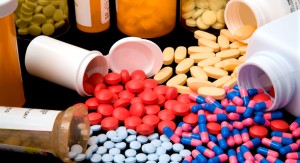 The science of pharmacovigilance deals with the analysis of any harmful effects of pharmaceuticals. While pharmacovigilance is considered a pharmacological science, it is sometimes considered to be a combination of science and art, because it involves speculation as well as the analysis of facts, according to the website, Non-clinical Careers for Physicians. Pharmacovigilance draws upon a diverse set of disciplines and skills that include medicine, writing, analytical abilities, detective work, and more. In pharmacovigilance, it must be determined that any bad results of a patient’s use of a drug or medical device were in fact caused by that drug or medical device and not by other factors.
The science of pharmacovigilance deals with the analysis of any harmful effects of pharmaceuticals. While pharmacovigilance is considered a pharmacological science, it is sometimes considered to be a combination of science and art, because it involves speculation as well as the analysis of facts, according to the website, Non-clinical Careers for Physicians. Pharmacovigilance draws upon a diverse set of disciplines and skills that include medicine, writing, analytical abilities, detective work, and more. In pharmacovigilance, it must be determined that any bad results of a patient’s use of a drug or medical device were in fact caused by that drug or medical device and not by other factors.
After information on adverse effects to a drug is put into a database, it is analyzed and reports are written that detail any potential dangers of the drug. These reports must be sent out to organizations such as the Food and Drug Administration, and individual reports are often compiled into aggregate reports by different companies, government agencies, or other entities engaged in medicine and pharmaceuticals.
Adverse Drug Reactions and Adverse Event Reporting
Those who work in pharmacovigilance concern themselves with adverse drugs reactions, or ADRs. Drug regulation authorities and departments of drug safety at pharmaceutical companies must put a great deal of effort into compiling and archiving data related to adverse events. In most companies, drug companies are required by law to report any adverse event information. Such information could come from a wide variety of sources, but mainly is contributed by healthcare professionals and patients.
According to the World Health Organization, in pharmacovigilance there are considered to be four main elements to every case of an adverse event. These four elements are an identifiable patient, an identifiable reporter, a drug in question, and the actual adverse event. All four of these elements must be present for an AE case to be valid.
Risk Management and Pharmacovigilance
A drug can only be considered effective if its benefits outweigh its risks. Part of pharmacovigilence is deterring the risk/benefit profile of a drug in question. Risk management is an important part of pharmacovigilence, and a common task in pharmacovigilance is the compilation of a Risk Management Plan that details the risks of a drug and how these risks are to be managed.
The risk/benefit profile of a drug is produced from the results of clinical trials. Companies that manufacture pharmaceuticals are generally required by law to carry out clinical trials that are meant to determine the following:
- Does the drug work effectively and how effectively does it work?
- Does the drug have any harmful side effect?
- Does the drug provide more benefits than harm? How much more does the drug benefit a patient than harm a patient? How likely is it that the drug will harm the patient and how seriously will the patient be harmed?
Related Resource: Physiologist
Where is Pharmacovigilance Study Conducted?
Pharmacovigilance specialists work for pharmaceutical companies. They are also hired by the FDA and other government agencies that concern themselves with food and drug safety. Pharmacovigilance specialists might also work for NGOs, research organizations, universities, hospitals, and consultancies.